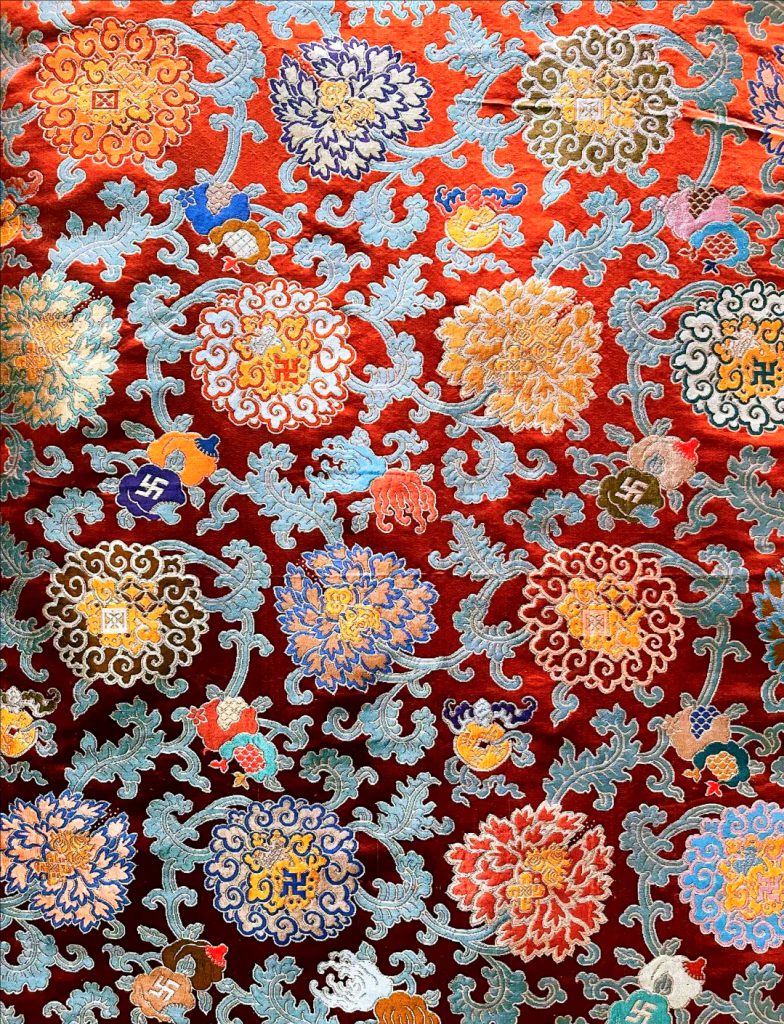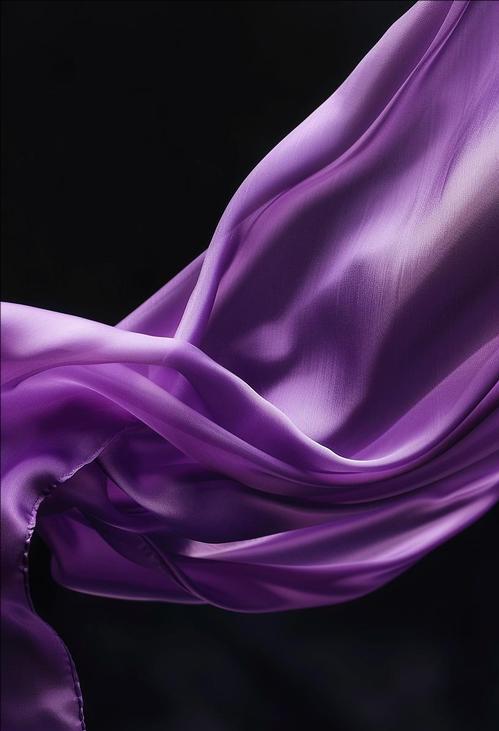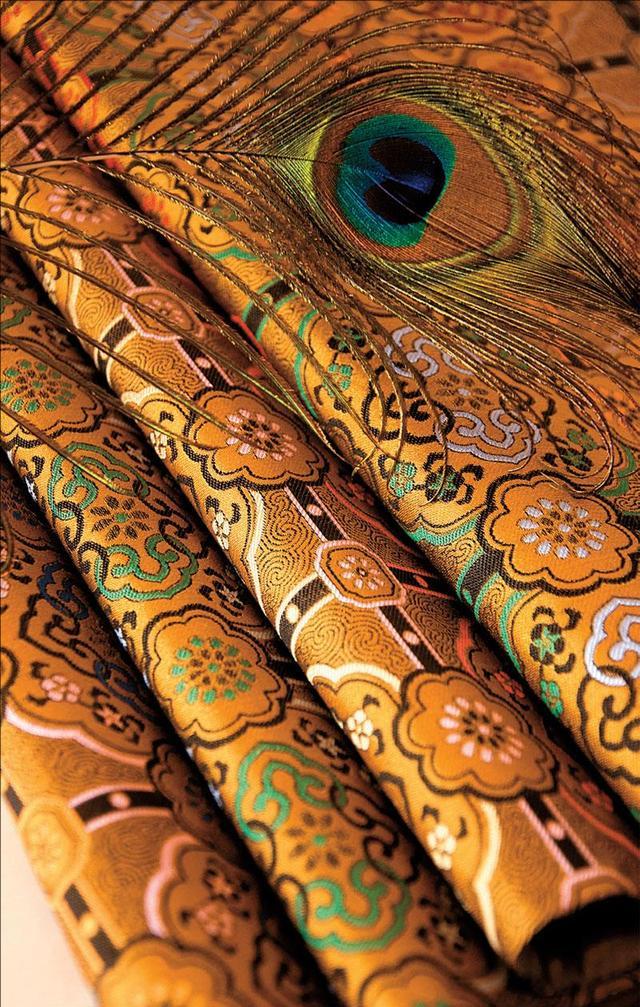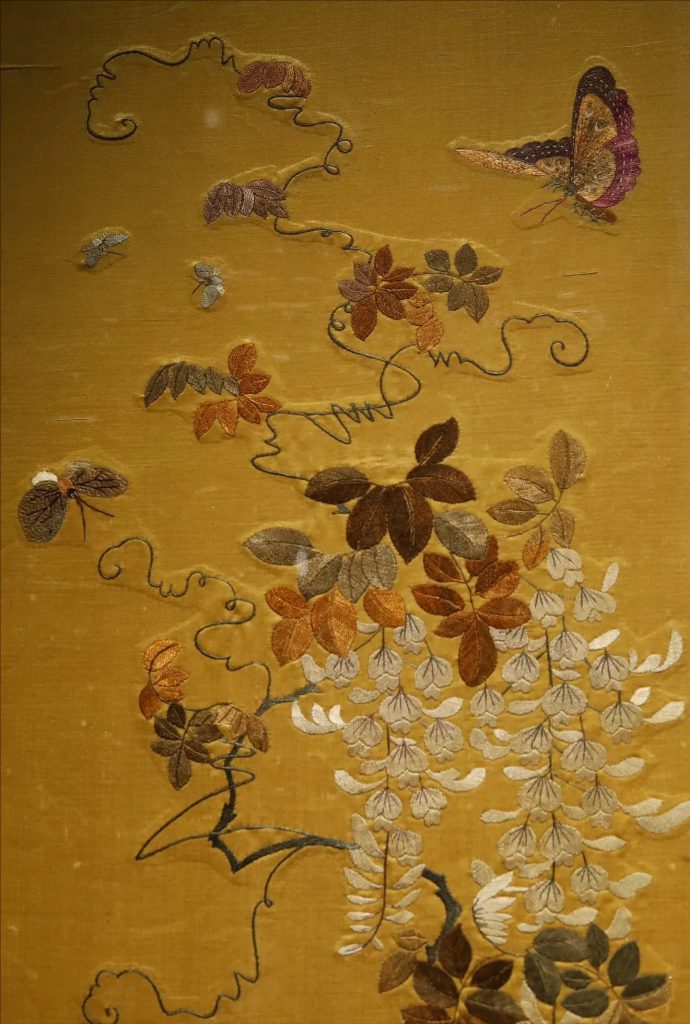In China’s traditional textile processing, twill, silk, satin, brocade, embroidery and yarn are seven representative fabric types, each of which has unique technological characteristics and uses. The following is their detailed introduction:
- Ling
Features: It is woven with twill weave, with obvious diagonal lines on the surface, light and soft texture and delicate luster.
Uses: In ancient times, it was mostly used for painting and calligraphy mounting, official clothes (such as the silk robes of officials in the Tang Dynasty) or high-grade clothing.
Representatives: “Hangling” in Zhejiang and “Wu Ling” in Jiangsu.

- Luo
Features: It is woven by warping technology, with hollow holes on the fabric surface, excellent air permeability and light and elegant texture.
Uses: summer clothes, curtains, etc., have been the favorite materials of nobles since the Han Dynasty, such as “Xiang Fei Luo”.
Classification: horizontal roller (transverse hole pattern) and straight roller (longitudinal hole pattern).

- Chou
Features: broadly speaking, it refers to plain weave silk fabric (also refers to artificial silk in modern times), with compact texture and smooth surface.
Uses: Daily clothes and quilts, such as “tussah silk” (woven from tussah silk) and “poplin” (cotton-like silk).
Note: In ancient times, “silk” specifically referred to silk fabrics, but now it is extended to chemical fiber fabrics.

- satin (Duan)
Features: satin weave, few interweaving points of warp and weft, smooth surface like a mirror, soft to the touch, gorgeous and heavy.
Uses: dresses, cheongsam, high-grade home textiles, such as “brocade” and “brocade weaving”.
Classification: According to the gloss, there are “glossy satin” and “matte satin”.

- Jin
Features: colorful jacquard fabric, with complex technology and exquisite patterns, is known as “inch brocade inch gold”.
Uses: court costumes and decorations, representative varieties:
Yunjin (Nanjing, the royal palace of Ming and Qing Dynasties)
Shu Brocade (Sichuan, famous in Han Dynasty)
Song Jin (Suzhou, Song Dynasty style, mostly used for painting and calligraphy mounting)

- Embroidery
Features: Embroidering patterns on fabrics with needle and thread, non-woven technology, belonging to decorative techniques.
Representative embroidery species:
Suzhou embroidery (Suzhou, exquisite and realistic)
Xiang embroidery (Hunan, with strong colors)
Guangdong embroidery (Guangdong, gorgeous gold thread)
Shu embroidery (Sichuan, with strong three-dimensional sense)
Uses: clothing, screens, artworks.

- yarn (Sha)
Features: light and transparent plain or twisted warp fabric, low density, good air permeability, and some holes.
Classification:
Plain yarn (no pattern, such as “plain yarn clothing” unearthed from Mawangdui Han tomb)
Flower yarn (jacquard or printed pattern)
Crepe (with wrinkles on the surface, such as “Xiangyun yarn”)
Uses: summer clothes, curtains, blouses.

Summarize and contrast
Type, core process, core features, typical uses
Twill twill weave diagonal lines, light and shiny painting and calligraphy mounting, official clothing.
The rib warp technology hollows out holes, breathable summer clothes and curtains.
Silk plain weave is smooth and tight. Everyday clothes
Satin satin weave smooth as a mirror, gorgeous dresses, home textiles.
Colorful patterns of brocade and jacquard technology, and expensive court clothes.
Embroidery embroidery techniques manual decoration, three-dimensional works of art, clothing
Thin yarn weave light and porous summer clothes and curtains
These fabrics not only embody the peak of China’s ancient textile technology, but also bear rich cultural connotations, and are still important representatives of traditional crafts.
